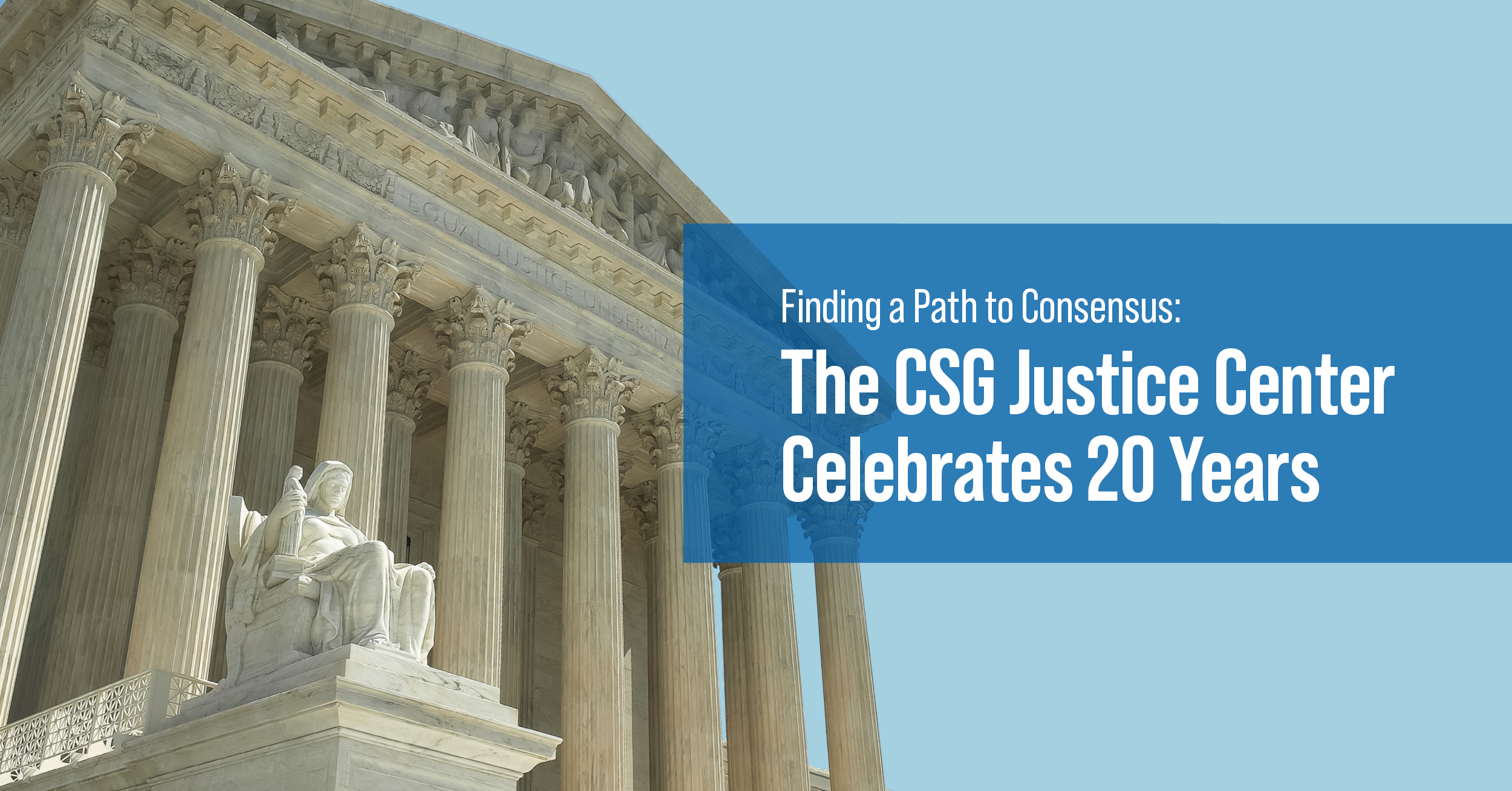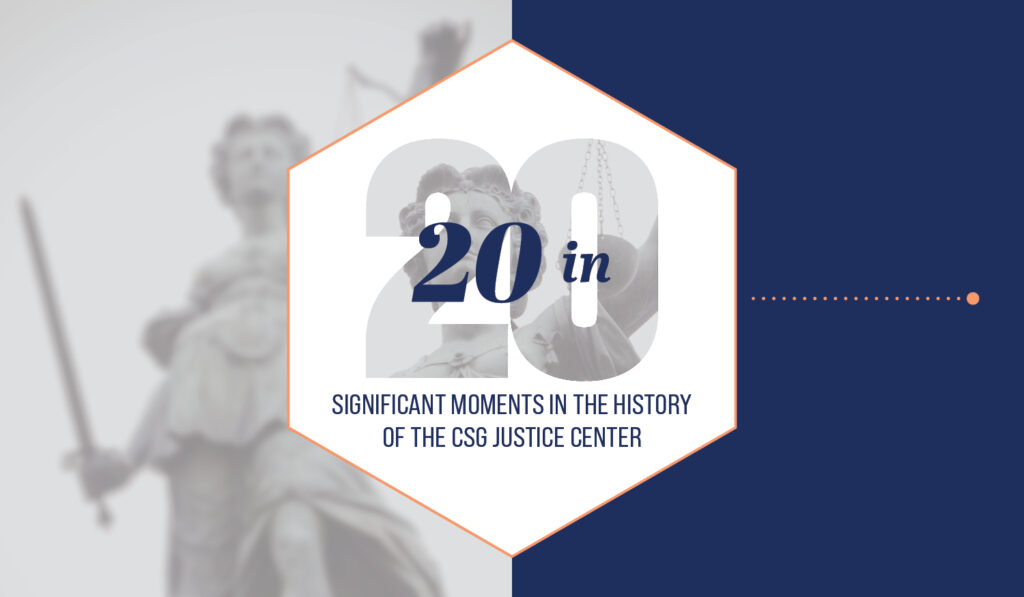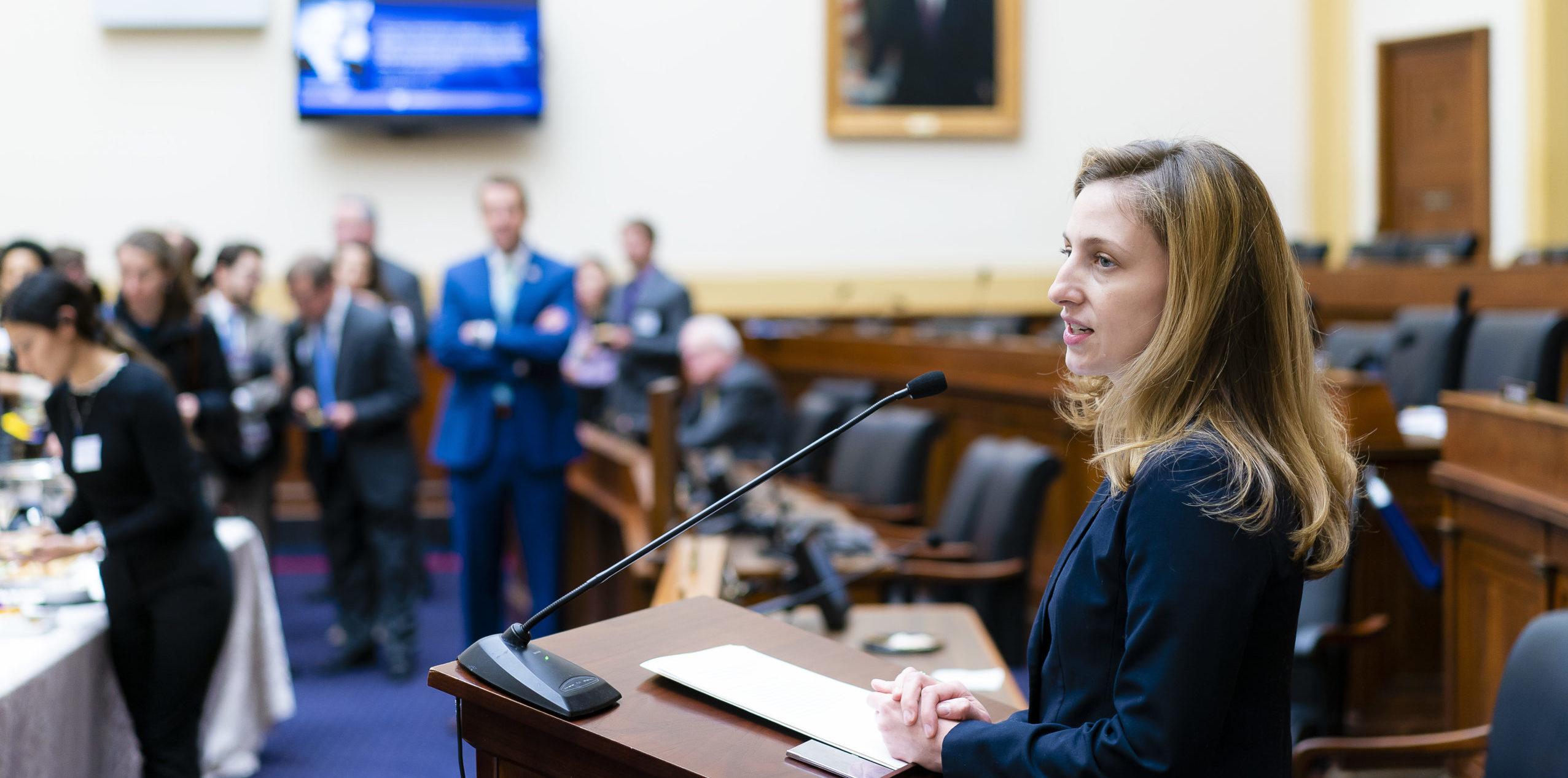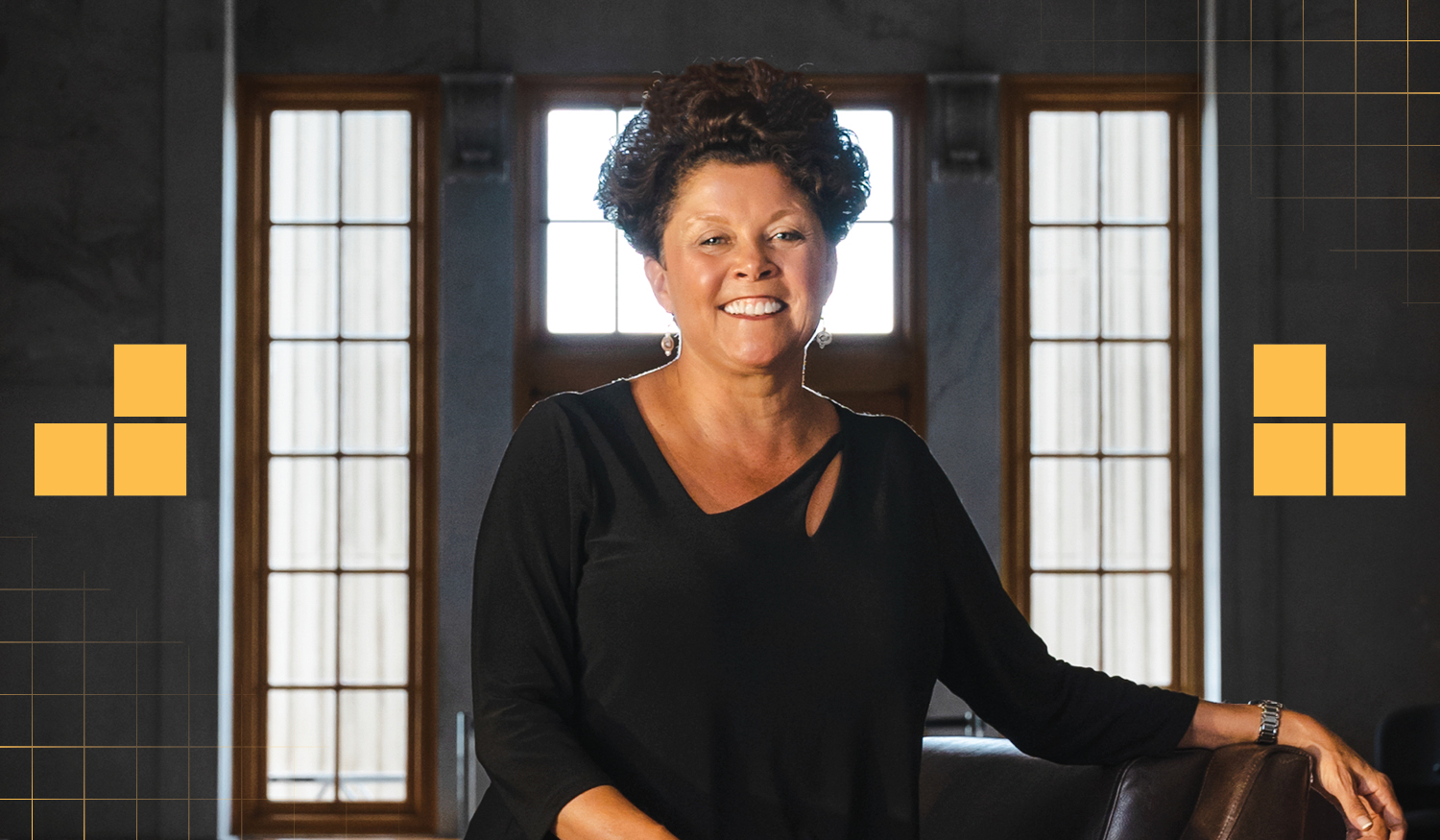By Amelia Vorpahl
The U.S. criminal justice system can evoke complicated emotions.
If you asked people what the ultimate goals of the system should be, most answers would likely include things like reducing crime and recidivism, using public resources effectively, keeping people safe and allowing for a humane system that upholds accountability. However, how we achieve these goals is where much of the difficulty arises. Political realities, competing priorities and incomplete or contradictory data can make it incredibly hard for policymakers to fully grasp what’s needed. For decades, state leaders on both sides of the aisle have called for a way to talk about what’s working and what’s not without politics getting in the way.
“In the mid-1990s, it became very clear that if you had a meeting of legislators from different states, or of prosecutors, public defenders, or victims — that people agreed on a vast majority of the things that needed to be done to make the criminal justice system work better. And that was the genesis of what has grown into the [CSG] Justice Center,” said Mike Lawlor, a founding member of the CSG Justice Center advisory board.
EARLY DAYS OF THE CSG JUSTICE CENTER
The origin of the CSG Justice Center focused on the fundamental idea that leaders needed a space to help find consensus on how states could tackle complex issues of safety, health and justice. Two decades later, the organization has grown into a group of 120 researchers, practitioners, policy experts and writers with an advisory board representing a cross-section of key leaders shaping criminal justice policy across the country.“To have what’s effectively a 120-person criminal justice think tank attached to a membership organization like CSG and part of that family is very unique,” said CSG Justice Center Director Megan Quattlebaum. “We have staff going out in the field all over the country, which gives them a clear vantage point of what the needs of our members are. That is something special and important.”
To understand how the CSG Justice Center evolved from its beginnings to its current stature, you can start with one person: Mike Thompson. When 25-year-old Thompson was hired as a criminal justice policy analyst at CSG East in 1997, he was the sole staff member of the only CSG criminal justice program. While working to get the new CSG East program off the ground, Thompson targeted a handful of key justice issues that could earn consensus, including juvenile justice, support for victims of crime, improved responses to mental health needs and racial disparities in the justice system.
Although these topics sound fairly mainstream today, the late 1990s and early 2000s were challenging times for organizations in the criminal justice space. CSG East had to navigate a political atmosphere that lacked the bipartisanship and consensus on basic criminal justice policies seen today, especially regarding what drives crime and recidivism. Back then, Thompson said there were prevailing thoughts that people could fake a mental illness to get out of responsibility for committing a crime, or that people could be ordered into treatment without consent.
“I don’t care if you were a Democrat or a Republican, you didn’t want to be seen as soft on crime,” said Thompson. “But I came from corrections, and those guys weren’t ideological. They just said, ‘This is what needs to happen to run a safe prison and to reduce recidivism.’ So, I saw the mission as framing issues in a way that gets Republicans and Democrats around a table with experts to agree that these were problems we all want to solve.
”For one of its first major projects in 2002, CSG East brought together experts from behavioral health, criminal justice, law enforcement and other key fields to publish the Criminal Justice/Mental Health Consensus Project, a first-of-its-kind report with policy recommendations to help stakeholders address the needs of people with mental illness who are involved with the justice system. This report launched the type of work that the CSG Justice Center is now known for: gathering expertise from key leaders across impacted systems to promote data-driven and evidence-based policy ideas. Four years after this seminal report, the CSG Governing Board voted to establish the national CSG Justice Center, diverging the work of CSG East’s criminal justice program into a separate organization, still under Thompson’s leadership.
“A TRAIN GOING 400 MILES AN HOUR”
The staff and board members from early years describe the formation of the CSG Justice Center as having energy like that of a startup company, with the freedom, flexibility and hustle of having to build a program from the ground up. Everyone did everything, from hiring to budgets, to writing and even leading high-level meetings with federal and state leaders. There was no infrastructure and no rulebook to work from. Thompson laughed as he compared the CSG Justice Center to a “lemonade stand” in those early years. As with most startups, everyone has stories of mishaps and adventures they still love to retell.
Michael Festa, AARP Massachusetts state director and the first chair of the CSG Justice Center Advisory Board, fondly recalled an early board meeting in his Massachusetts garden enjoying a New England clambake when a torrential downpour started. The board members then spent hours on a bus, soaking wet. During the final meeting for the Consensus Project report, Thompson remembered running out of a ballroom with hundreds of top justice and health leaders to crowd around a phone because he was chosen as a friend’s “lifeline” on the television show “Who Wants to be a Millionaire?” which was taping the same day.
Renée Brackett, executive assistant to senior management and he Justice Center’s longest-serving employee, called the early days “a train going 400 miles an hour.” She spoke about being a “one-man shop” while planning a conference for 1,000 people during her first year on the job. “I can still remember the dates because I didn’t sleep the entire Christmas break,” she said.
While the founding CSG Justice Center team navigated the challenges of building a new organization, they also pioneered entirely new ways of approaching criminal justice policy. Marshall Clement, CSG Justice Center deputy director and one of the early staff members, remembers piloting the groundbreaking Justice Reinvestment Initiative. His small team traveled across the country multiple times a month to gather data, listen to stakeholders and convene working groups using the data to develop policy options that would reduce corrections costs and allow states to reinvest savings in making communities safer. In more than 30 participating states, their efforts through the years have led to a reduction — by thousands — of the number of people behind bars, as well as lower recidivism rates, prison closures and millions of dollars reinvested in community-based treatment and alternatives to incarceration.
Both Thompson and Clement are quick to commend the hard work of the early staff members and to uplift the critical role that the first advisory board members played in getting the organization started. The board’s early leadership and guidance set the stage for the incredible success of the CSG Justice Center over the next 20 years.Michael Festa says he feels blessed to have been one of the first board members and credits its focus on “bipartisanship, evidence-based policies, finding a path to consensus, and perhaps just as important, doing all of it with mutual respect and genuine affection.”
EXTERNAL AND INTERNAL EVOLUTION
By all accounts, the tireless work ethic, grit and drive of the founding CSG Justice Center staff and board members has paid off. The criminal justice policy landscape of 2022 is very different than that of 2002, and Quattlebaum attributes this to the Justice Center’s work over the last two decades along with its partners and members. For example, she argues that there is an increasing recognition of how outcomes on community supervision drive prison admissions and populations, crediting the Justice Center’s research division and its Confined and Costly 50-state revocations report for helping make that case. She’s also seen states focus more on how they can better respond to people with mental illness and behavioral health conditions by reducing justice system contact and expanding access to treatment, including through innovative ideas like co-responder teams and community responder programs.
“Twenty years ago, co-response programs in law enforcement departments were not something you’d find in jurisdictions across the country. Twenty years ago, the national recognition of a bipartisan consensus around criminal justice policies just wasn’t there,” said Quattlebaum. “We know the criminal justice system needs collaboration with the housing system, with workforce development, with mental and behavioral health systems and with education. From our earliest days, we had staff whose expertise came from the health side and not the criminal justice side.”
Clement agrees and said he’s proud of the major evolutions that he has seen take place at the CSG Justice Center over his 17-year tenure, including the growth of the organization and staff itself, the impact of its work in transforming the criminal justice and behavioral health fields and the rise in public awareness of necessary reform to our systems of safety and justice.
A DATA-DRIVEN APPROACH
Although the CSG Justice Center’s work touches on every facet of the justice system, a throughline is the focus on data and research. From the beginning, the Justice Center pioneered a bipartisan, data-driven approach to criminal justice reform in red and blue states alike that was unprecedented in the justice policy landscape. The key to this success, spanning the past 20 years, has been the Justice Center’s ability to uplift its members to speak firsthand about the needs in their communities.
“In order to build possibilities, you have to have a lot of perspectives at the table so that you’re really understanding the problem in its fullest dimension,” said Quattlebaum. “You have to have the courts and the executive and legislative branches at the table if you really want to see justice systems become more efficient and fairer. All those folks need to be in the conversation.”
While the CSG Justice Center has helped reform criminal justice policy in the United States, the organization is increasingly seeing the need to look further upstream to prevent justice system involvement altogether. This includes helping communities build more robust crisis response systems that prevent arrests and jail stays for people with behavioral health needs as well as a focus on front-end diversion in juvenile justice systems. Reentry and diversion systems also face challenges in growing to scale, and the Justice Center has prioritized ensuring that there is a baseline level of services across the country while helping states tailor supports to individual needs.
“The work of the CSG Justice Center over the last 20 years has been the work of a lot of people. You’d have to fill up the entire magazine with names if you really want to do it justice,” said Quattlebaum. “So many people’s ideas and effort have gone into making us what we are today. I can’t say enough how grateful we are to everybody who has been a part of this incredible project.”
LOOKING AHEAD
So, where does the CSG Justice Center go from here? Quattlebaum says that the organization’s commitment to consensus-based work won’t change, but one example of its new direction is found in its prioritization of racial equity. Internally, staff are having candid conversations about policies and practices that will ensure that the Justice Center is a transparent, fair and welcoming workplace. In its external work, there is increased focus on helping states directly tackle racially disproportionate outcomes in their justice systems. This focus has come directly from member requests.
“I think a lot about how policy and practice changes can be sustained over time. We assist policymakers to build a wide and deep base of support so that the reforms states enact are deeply embedded and sustainable moving forward. It’s important to think about how it lasts.” Quattlebaum said. “At some basic level, you have to be playing the long game.”
Looking ahead, the CSG Justice Center is focused on three big areas in which it sees broad bipartisan support, including breaking cycles of incarceration; advancing health, opportunity and equity; and using data to improve safety and justice. State and local leaders are focused on the shortcomings of safety and justice systems and are interested in ways to transform these systems to increase public safety at less cost. By ensuring its work is grounded in the present-day challenges of leaders on the ground, the Justice Center is moving the field forward with ground-breaking research and building capacity to develop innovative and practical tools while scaling up how it helps state and local leaders across all 50 states.
This article appeared in the CSG Capitol Ideas magazine (2022, Issue 4). View current and past issues at csg.org/publications/capitol-ideas.







